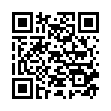|
Algebraic and logical methods in computer science and artificial intelligence
Globally admissible inference rules
V. V. Rimatskiy
Siberian Federal University, Krasnoyarsk, Russian Federation
Abstract:
Setting the basic rules of inference is fundamental to logic. The most general variant of possible inference rules are admissible inference rules: in logic $L$, a rule of inference is admissible if the set of theorems $L$ is closed with respect to this rule. The study of admissible inference rules was stimulated by Friedman's problem: Is there an algorithm for recognizing the admissibility of an inference rule in intuitionistic logic? For a wide class of non-classical logics the problem of recognizing with respect to the admissibility of inference rules was solved in 1980s. Another way of describing all admissible rules in logic goes back to the problem of A. Kuznetsov (1975): specifying a certain (finite) set of admissible rules, from which all other admissible rules in logic will be derived as consequences, i.e. setting a (finite) basis. It turned out that most basic non-classical logics do not have a finite basis for admissible inference rules. In the early 2000s, for most basic non-classical logics and some tabular logics, the Fridman-Kuznetsov problem was solved by describing an explicit basis for admissible rules.
The next stage in the study of admissible inference rules for non-classical logics can be considered the concept of a globally admissible inference rule. Globally admissible rules in the logic $L$ are those inference rules that are admissible simultaneously in all (with finite model property) extensions of the given logic. Such rules develop and generalize the concept of an admissible inference rule. The present work is devoted to the study of globally admissible rules of logic $S4$. Conditions for global admissibility in the logic $S4$ were obtained, a characteristic (universal) model was constructed (checking global admissibility is reduced to checking the truth of a rule on its submodels), a basis was described (all globally admissible rules are derived from it) and an anti-basis (from which all rules not available globally in $S4$).
Keywords:
modal logic, frame and model Kripke, admissible and globally admissible inference rule.
Received: 04.07.2022
Revised: 03.08.2022
Accepted: 01.09.2022
Citation:
V. V. Rimatskiy, “Globally admissible inference rules”, Bulletin of Irkutsk State University. Series Mathematics, 42 (2022), 138–160
Linking options:
https://www.mathnet.ru/eng/iigum511 https://www.mathnet.ru/eng/iigum/v42/p138
|
| Statistics & downloads: |
| Abstract page: | 56 | | Full-text PDF : | 28 | | References: | 9 |
|



 Contact us:
Contact us: Terms of Use
Terms of Use
 Registration to the website
Registration to the website Logotypes
Logotypes







 Citation in format
Citation in format 